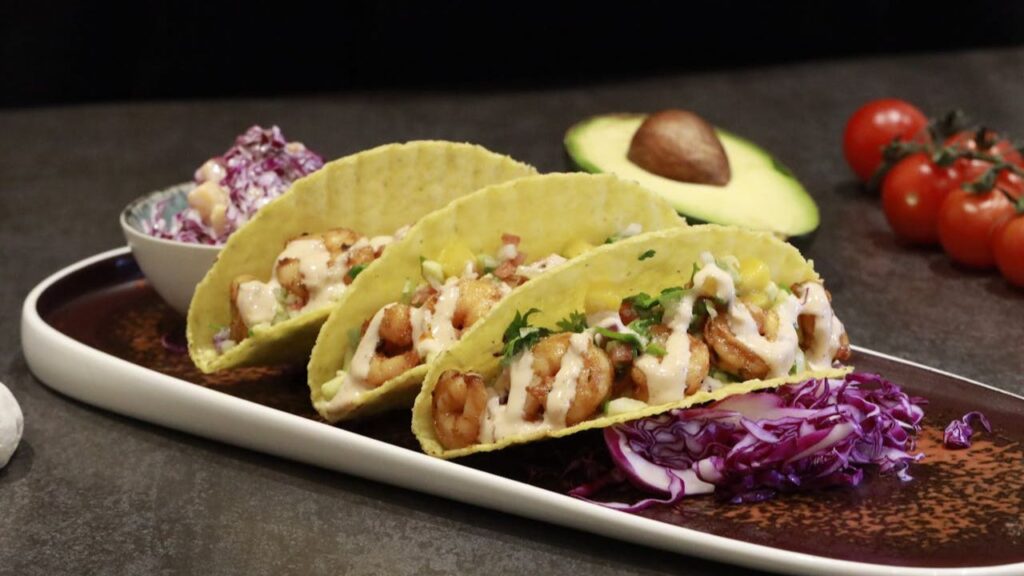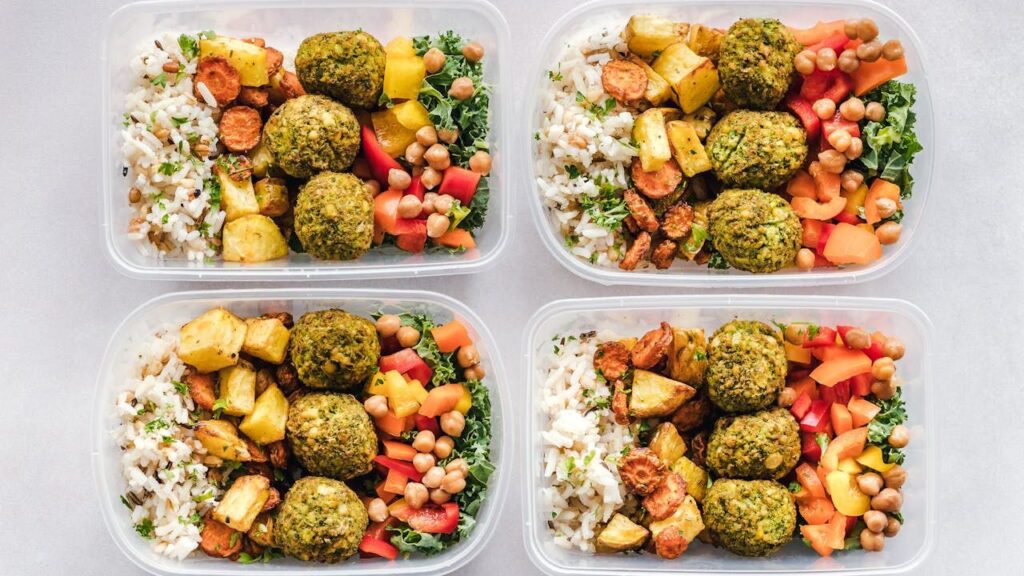If you’re a fan of falafel and want to take this iconic Middle Eastern street food to the next level, the trick may be one incredible, fragrant ingredient: fennel in falafel. This unassuming spice is the magic that turns good, comforting falafel into something truly remarkable and unforgettable. Though not universally present in the most fundamental recipes, fennel is a renowned ingredient in countless family home kitchens and professional eateries for the added depth and richness it provides.
Including fennel with your falafel adds a delicate, sweet scent and flavor with a touch of anise-like complexity that pairs with the earthiness of the chickpeas to perfection. This definitive guide will delve into everything you’ll need to know about this great culinary combination. We will dive into why fennel works so well, how to use it in your own recipe, and the wonderful ways it can make your homemade falafel stand out from the rest. Get ready to discover how a simple pinch of fennel for falafel can unlock a world of new flavor in your kitchen.

What Does Fennel Do for Falafel?
When you incorporate fennel into a falafel recipe, it adds an entirely new layer of flavor that is lovely and complex and makes your falafel a little special. Falafel can be quite bland without spices, and while again, spices like cumin, coriander, and other common spices and are great for providing an earthy aroma. Fennel introduces a different layer altogether in that it adds a mild sweetness paired with the not-so-subtle taste of licorice. In fact, rather than being overwhelming, fennel enhances the flavor of chickpeas, yielding a nutty taste. When you toast the fennel seeds, they deepen and become richer and nuttier, perfuming the entire falafel mixture.
You end up with a falafel that is savory and aromatic, while also being sophisticated. Further, the flavor of the fennel in falafel is not too intense. It is slightly sweet and is refreshing enough to balance out the richness of the fried crust of the falafel. The freshness of the fennel lightens the palate even if the outside is fried, which is a little unexplainable, but delightful. It’s that combination of earthy, savory, and subtle sweetness that makes the falafel simply delicious.
From Seed to Spice: The Forms of Fennel You Can Use
When you think about adding fennel to your falafel, you can use fennel in two wonderful forms that each add its own distinct personality to the recipe. The most common and definitely preferred form is fennel seeds. These little dried seeds have a lot of flavor in their tiny size. They can be used whole, although we prefer to grind them or to start with fennel powder if you already have it ground. Toasting whole seeds in a dry pan for a minute or two until fragrant. Then grinding them will really open up their flavor and help give your falafel a warm and nutty essence.
The alternative is to use the fresh fennel bulb, which calls for cutting up the dense. White crunch of the fennel plant and blending it right into the chickpea and herb mixture along with the chickpeas. The fresh fennel bulb will bring a milder, more vegetal and fresh flavor compared to the fennel seeds. The fresh bulb will also add a little more moisture and can change the texture slightly. It’s fresh bulb gives a crisp note and the strong aroma of seeds gives a warm nutty flavor. Both options allow you to bring the unique flavor of fennel into the falafel.
Crafting the Perfect Recipe: Your Blueprint for Fennel Falafel
Making a batch of falafel with fennel is simple and gratifying! We’ve included a recipe to help you make this tasty version. The starting place is your chickpeas; you must use dried chickpeas soaked overnight. Canned chickpeas usually contain excess moisture, which will lead to mushy falafel. For this recipe, which serves four, 1 cup of dried chickpeas is usually sufficient. The essential spices are equally important: 1 tablespoon of fennel seeds, which you should toast lightly in a dry pan to fully release their aroma before grinding them.
Along with the fennel, you will also need 1 tablespoon of cumin seeds and 1 tablespoon of coriander seeds roasted in the same method. The aromatics should include a handful of fresh parsley, a few cloves of garlic, and a small onion, all coarsely chopped. To bind the mixture, approximately 1 tablespoon of chickpea flour and 1 teaspoon of baking powder is needed, making the falafel light and fluffy when cooked.

Bringing Your Fennel Falafel to Life
Transforming a bowl of ingredients into perfectly golden-brown fennel falafel is a process that relies on technique! After you soak and drain the chickpeas, the 1st step is to toast your whole spices. Place the fennel, cumin, and coriander seeds into a dry saute pan over medium-low heat (I like medium because there is no concern about burning so long as you pay attention). Shake the pan regularly for about a minute or potentially two, until you begin to smell a deep nutty aroma! They should stop toasting and be removed before they burn. Next, in a food processor, combine the chickpeas, toasted spices, chopped onion, garlic, and chopped fresh parsley.
Pulse the mixture until finely ground, but do not form a smooth paste at this point, still. The texture of the flourless falafel will be more coarse, and have the signature character, almost a bit gritty to the texture. Use a bowl, move mixture to the bowl, and then add the chickpea flour and baking powder. The next step, for optimal results, is to cover the bowl and put the mixture in the refrigerator for at least 30 to 45 minutes! This adequately “bathes” the flavors together and makes it much easier to shape after it’s chilled.
Cooking and Serving Your Flavorful Creation
Once the falafel mixture has cooled, it’s time to cook them to golden perfection. With wet hands, scoop a portion of the mixture from the bowl and gently squeeze it into small rounds the size of a golf ball. Cooking the falafel can be done with two wonderful options. The first is the classic path to deep fry them. When frying falafel, simply heat a neutral oil and use rice bran or vegetable oil in a pot until it is hot and fry batches of falafel in the hot oil until they are deeply crispy brown outside and thoroughly cooked inside.
Alternatively, bake them if you prefer a healthier option. Brush a cookie sheet with oil and bake them at 350° F (175° C) for 20 minutes or until golden brown, while flipping them halfway through. Enjoy your fennel falafel fresh and hot, as they taste best this way. They are excellent stuffed in warm pita with fresh vegetables like lettuce, tomato, and cucumber and drizzled with a tahini sauce or a tangy sumac yogurt.
The Health Benefits in Your Falafel
Incorporating fennel into falafel offers more than a delicious flavor; it also provides an excellent way to add nutrition to your meal. Fennel is a superfood, and although it is under-recognized, it is loaded with nutrients that provide specific health benefits. This Fennel is a good source of dietary fiber, which is beneficial for digestion and promoting heart health. Fennel is also a good source of potassium, an important mineral in regulating blood pressure.
Additionally, fennel contains a host of antioxidant compounds, such as quercetin and kaempferol, that possess anti-inflammatory properties and help protect the body and its cells against damage. Fennel also provides good amounts of Vitamin C, an important vitamin in immune health and skin health. Therefore, when you eat your tasty falafel with fennel, you are not simply enjoying something great for your taste buds; you are giving your body some good nutrition that contributes to your well-being.
Fennel Falafel vs. Traditional Falafel
To better understand how to appreciate a fennel-flavored falafel, it’s useful to compare it to what is probably a more standard version. The table below summarizes the primary ways in which the flavor, ingredients and complete experience differ.
| Feature | Fennel-Infused Falafel | Traditional Falafel |
| Primary Flavor Profile | Complex, aromatic, with subtle sweet and anise notes . | Earthy, savory, and robust from cumin and coriander. |
| Key Spice Ingredients | Toasted fennel seeds, cumin, coriander . | Cumin, coriander, and sometimes cayenne pepper. |
| Aroma | Highly fragrant and nutty, thanks to the toasted spices. | Warm and earthy. |
| Best For | Those seeking a gourmet, complex twist on a classic. | Lovers of the classic, familiar falafel taste. |
| Culinary Character | Sophisticated and refreshing, with a unique depth of flavor. | Hearty, comforting, and straightforwardly savory. |

Embrace the Aromatic Magic of Fennel in Falafel
To summarize, the simple idea of incorporating fennel into falafel is a small adjustment that makes a huge difference in flavor. It matters not in what form, toasted seeds or fresh bulb. Fennel is an incredibly versatile spice. It elevates your basic falafel preparation from a fried snack to a flavorful experience that is fragrant, layered, and out of this world. In addition to its great flavor, fennel also adds nutritional value to your meal as well. So in a sense, your meal is both delicious and nutritious.
The process of making falafel with fennel is as simple as any other traditional recipe. With allowance for one extra step that is, toast and grind it to use in the preparation to open up a universe of flavor. Therefore, the next time you are in the kitchen getting ready to make falafel, have the courage to use fennel. Be captivated by its aromatic wonder and find out why it is a special ingredient that contributes to a substantial falafel lunch.
FAQ’s
1. Can I use ground fennel powder instead of whole seeds?
Certainly, ground fennel powder can be used in place of whole seeds in recipes. If your recipe calls for 1 tablespoon of whole fennel seeds, an equal amount of ground powder (about 1 to 1.5 teaspoons) can be substituted. However, whole seeds are always going to give you a fresher and more powerful flavor. If you toast the whole seeds and grind the fennel just prior to use.
2. Will my falafel taste strongly of licorice?
Not at all. Right proportions of fennel will not taste like an overpowering licorice flavor of falafel. Toasting and cooking mellows the flavor of fennel and leaves you with a warm, sweet, and fragrant flavor. While enhancing the flavor of the chickpeas instead of masking them at all.
3. Is it better to use fresh fennel bulb or fennel seeds?
It depends on what is appealing to you in terms of flavor and texture. Fennel seeds (toasted varieties will offer the most intense, concentrated spice aroma), will provide a bold flavor with a concentrated spice aroma. Fresh fennel bulb will provide a flavor that is milder, fresher, and more vegetal, with a small amount of moisture to the mix. You could also use a mixture of the two to create a very complex flavor profile.
4. Can I still make fennel falafel if I’m using canned chickpeas?
It can be done, although not usually recommended. Canned chickpeas have more moisture which can make the falafel mixture feel too wet and hard to shape, and the falafel then could be mushy. For the best and crispiest falafel, start with dried chickpeas that you have soaked yourself.
5. Where can I find fennel seeds for my recipe?
Most well-stocked grocery stores will have fennel seeds in the spice aisle. Specialty shops, such as those catering to Middle Eastern or Mediterranean diets, health food store chains. Or online will also have them, although they may be labeled differently. It’s preferable to purchase from a store that has a higher turnover of goods, to assure freshness and aroma.
